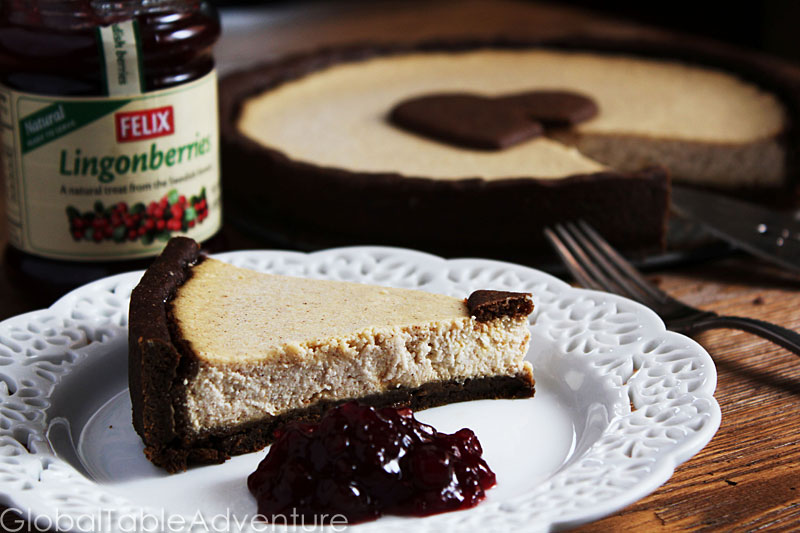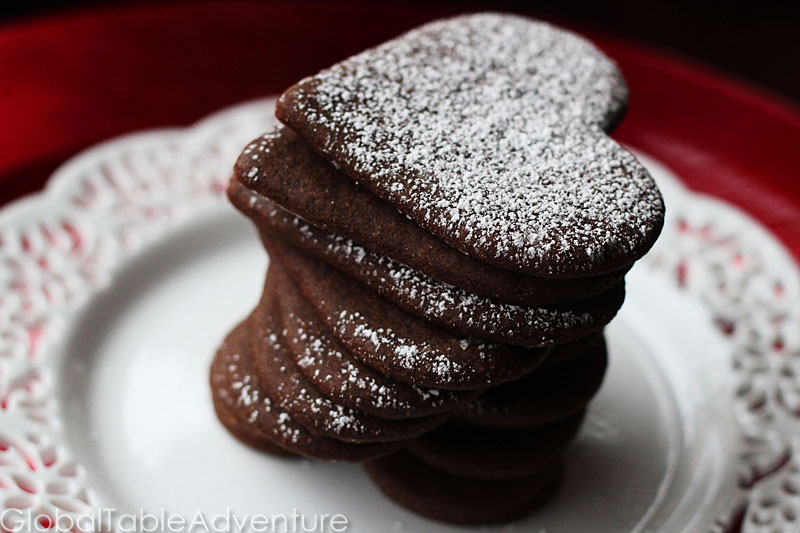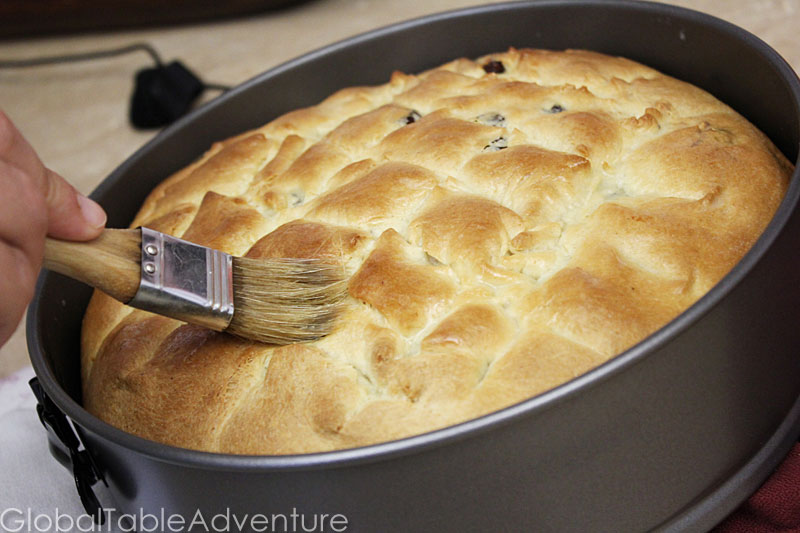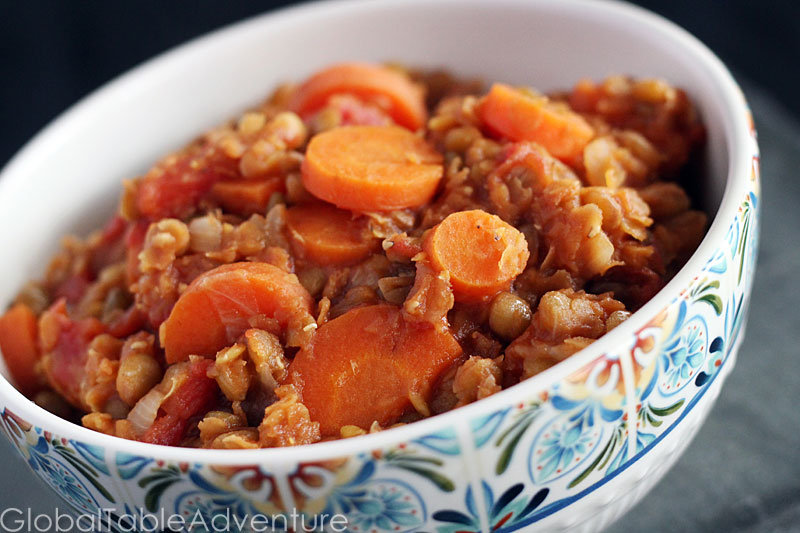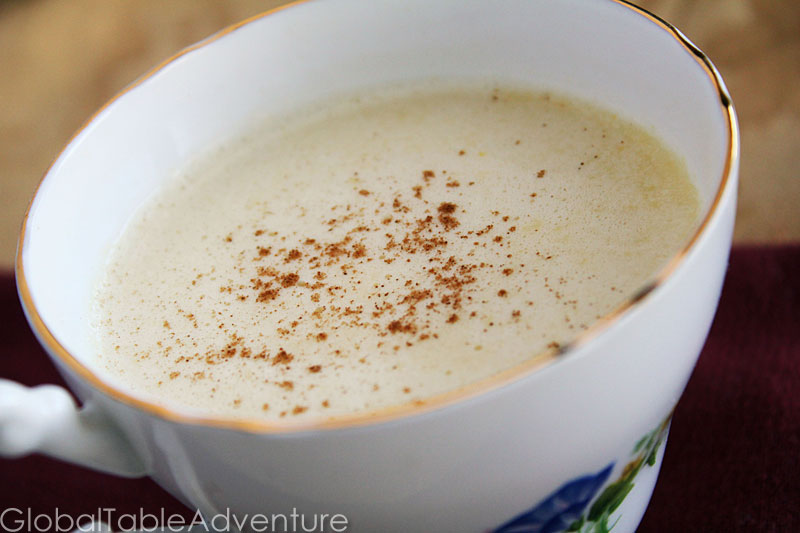Makes 4 quarts Stovetop popcorn is a must have if you’re looking to replicate an Ethiopian coffee ceremony. Sure, you could pop a bag in the microwave in less than three minutes, but… well… sometimes it’s more fun realizing how much you can do without special gadgets and gizmos. As far as who had more fun with this – me, Mr. Picky, or Miss Ava – it might have been me. I spent most of the time squealing while I waited for the first few to explode… I mean… pop. Also? I ate the most. Ingredients: 3 Tbsp vegetable oil 1/2 cup popcorn kernels salt Method: Popcorn needs to be made in a large pot, so there’s room for all the kernels to pop into white, fluffy snack goodness. It’s a lot like the heart – the bigger our hearts, the more room for all of 0ur emotions to … well… pop into white, fluffy bursts of life. With an open heart we experience so much more. Never let your heart run out of room. …
Read More

Coffee is said to have originated in Ethiopia. Today Ethiopian coffee ceremonies are common after large meals, even at restaurants. Women will roast beans in front of the guests. Then she’ll grind the beans, perfuming the room, and brew them in a clay coffee pot, or jebena. The coffee is served in small cups called si’ni. Diners have their choice of salt or sugar. Traditionally, every guest is offered 3 cupfuls- the same grounds being brewed each time, making each consecutive cup weaker. My Rendition At best, I was ill-prepared to perform an Ethiopian coffee ceremony. #1, I live in Tulsa, Oklahoma. #2, I lack every single piece of traditional Ethiopian coffee-making equipment there could possibly be. In fact, the only proper element I have is a bag of green coffee beans. Tilda’s parents brought them all the way over from Ethiopia, known as the birthplace of coffee. At least the coffee was right. I got to work, putting my college nickname “MacGyver” to good use. What follows are the results of a free-spirited, improvisational coffee …
Read More
Serves 8 Is it a tart? a cake? a cheese cake? All of the above? Whatever you call it, this gingerbread love-fest is the perfect combination for a winter dessert buffet. Special thanks to Nami Nami who’s ricotta cheesecake recipe inspired our version. Nami is an Estonian blogger with a great collection of recipes, both from her home country and beyond. Cheers! Ingredients: 15 oz container whole milk ricotta 1/4 cup sugar 1/2 tsp cinnamon 1/4 tsp cardamom 3 large eggs 1/8 cup heavy cream 1/2 gingerbread dough (there will be scraps leftover to make decorative cookies to put on the top of the cake) Garnish: Lingonberry jam, to taste Method: Take a few minutes to build a snowman. If there are no snowmen to be made, sit outside and drink a cup of tea and think about building a snowman. Ok, now you’re ready to bake this Estonian treat. First, place a water bath in the oven (a large pan half full of hot water) and preheat it to 350F. Meanwhile, in a medium bowl, …
Read More
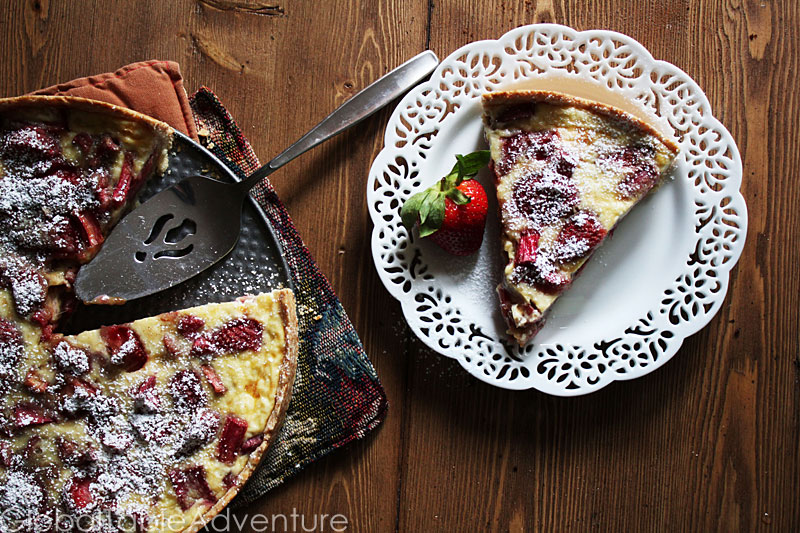
Want a bite of Estonian springtime? Go for rhubarb, the most beloved, cold-climate vegetable around. It looks like celery with lipstick, but tastes fruity and tart. Elizabeth Schneider explains the special place rhubarb has in countries like Estonia: Imagine that you’ve spent the winter eating fruits and vegetables rationed from a root cellar and canning jars. Now imagine the first rosy rhubarb of the year, welcome as new grass. Not so long ago, rhubarb held a special place in the culinary calendar as a unique fresh food, the earliest harbinger of spring. Vegetables from Amaranth to Zucchini 5 Fun facts about Rhubarb: Never eat the leaves, cooked or raw. They are toxic. Never cook rhubarb in aluminum – it will dull the fruit’s color. Look for flat, deep red stalks. They have the most flavor. Rhubarb can be mild or extremely tart. You may need to adjust your sweeteners accordingly. Rhubarb season begins in March, but hothouse rhubarbs are available as early as January. RECIPE Serves 8-10 A casual dusting of confectioner’s sugar gives this …
Read More
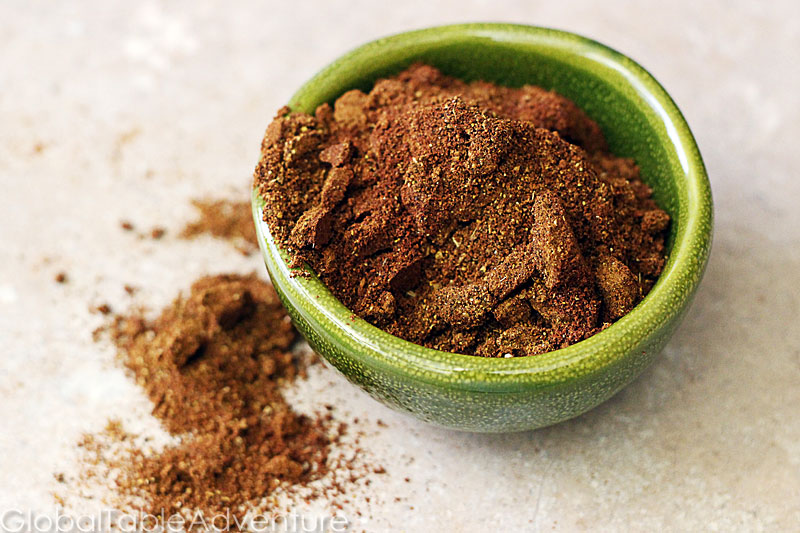
Berberé is a spicy and savory spice mixture used all over Eritrea and Ethiopia. This blend goes well with chicken, beef, or lamb, and would also be great with lentils and other legumes. I’ve used it with our Doro Wat (chicken stew) and Awaze Tibs (lamb stew) recipes. A few sprinkles would also be great in our Lentil Wat. Makes about 1/4 cup Ingredients: 3 cloves 1/2 tsp coriander seeds 1/2 tsp fenugreek seeds 1 tsp cumin 1 Tbsp paprika 1/4 tsp peppercorns 1/4 tsp ground ginger 1/4 tsp ground cinnamon 1/4 tsp ground turmeric 5 whole allspice balls 1/4 tsp cardamom seeds (removed from pods) 1/8 cup chili powder Method: Heat the spices in a clean, dry skillet to toast them. Once cool, grind them in batches. Keep going until most of the stragglers get ground up! Hey, that’s my sister! Enjoy. Berberé |Hot East African Spice blend Votes: 0 Rating: 0 You: Rate this recipe! Print Recipe Berberé is a spicy and savory spice mixture used all over Eritrea and Ethiopia. This blend goes well with …
Read More
Makes one 8″ round loaf My sister and I whipped up this Eritrean-inspired sweet bread and proceeded to stuff our faces with it all day long, until even the crumbs were gone. The cumin flavor is unusual, but goes perfectly with the sweet raisins. While most Hembesha are made thin and extremely ornately, my sister and I decided to make this thick, quick and dirty version so we could spend more time playing with Ava on a balmy 70F degree day in February. And so we could have more surface area to slather the hembesha with butter. Purist or not, I hope you can understand the lure of springtime in the winter. Ingredients: 4 – 4 1/2 cups all purpose flour 2 tsp instant dry yeast 1/4 tsp ground cardamom 1 tsp cumin 1/2 cup (1 stick) softened butter, plus extra for brushing 2/3 cup raisins 1 tsp salt 1/3 cup sugar 2 eggs 1 cup lukewarm milk Method: Grease an 8 inch springform pan. In the bowl of a standing mixer, add the flour, …
Read More
Serves 4 Let’s thank Eritrea for this giant, vegan bowl of deliciousness – a happy mixture of spicy lentils, offset by sweet carrots and tomatoes. The heat comes from berberé, the regional spice blend that should be added with a heavy hand. You know, for authenticity purposes. And lots of sweating. Edited to add: One of our readers posted a great tip in the comments section of our Ethiopian menu which also applies to Eritrean cooking: When I watch Ethiopian cooks in Ethiopia they chop up red onion very tiny (I use a food processor and stop short of pulverizing as it helps it cook down faster) and then dry cook it in the pan — no oil. They dry cook it stirring constantly until it turns almost into a paste — imagine the consistency of a good roux. It takes a lot of onion to get the right amount of this paste. Then add the oil/lentils, sauce stuff, etc. The onion paste is actually the thickener for the wat — if you don’t do …
Read More

Do you dream of cleaning out your cluttered silverware drawer? Are you totally tired of your dishes? Try a happy bite of Injera, the gorgeous Teff flatbread adored in Eritrea, Ethopia, and other East African countries. Sour and funky… Injera is almost as thin as a crepe, but spongy like a pancake … and is traditionally used both as a platter for spicy stews and to replace silverware. Three tips for foolproof Injera making: 1. Consistency Make sure the batter is almost the consistency of crêpe batter (between crêpes and pancakes) . Any thinner and the bubbles won’t form. Much thicker and it won’t look like traditional Injera. Practice makes perfect. 2. The Pan If you don’t have the traditional mitad (I didn’t), you can use a large, short sided pan. You’ll have the best luck with a nonstick pan or a really well seasoned crêpe pan. Cover loosely with aluminum foil if it doesn’t have a lid. 3. Play it cool Absolutely cool the Injera before stacking or attempting to move it around much. They are …
Read More
Serves 4-6 Okra amazes me. Fried, it behaves nicely. Crispy, yummy, good. When stewed okra becomes a little more… shall we say… unwieldy? Slippery? Viscous? No matter. In Equatorial Guinea they make the best of it and turn this tricky veggie into spicy and exotic side dish with a few simple spices (and one explosive habanero pepper). I avoided fire-engine heat levels by simply splitting the habanero to let a little juice out. It was more than enough heat for me. While the okra becomes characteristically gooey, the flavor is amazing – and supposedly, one of the forerunners to southern gumbo. Ingredients: 1 tsp red palm oil 1 onion, chopped 1 habenero pepper, slit 1 tsp curry 1/4 tsp chili powder 1 lb sliced okra water, to cover Method: If you can get fresh okra, fantastic. If not, thaw a bag of okra. Meanwhile, take a stroll. Wave at your neighbors and smile so big they’ll wonder what’s up your sleeve. When you get home, heat up the red palm oil in a medium pot. Add the …
Read More
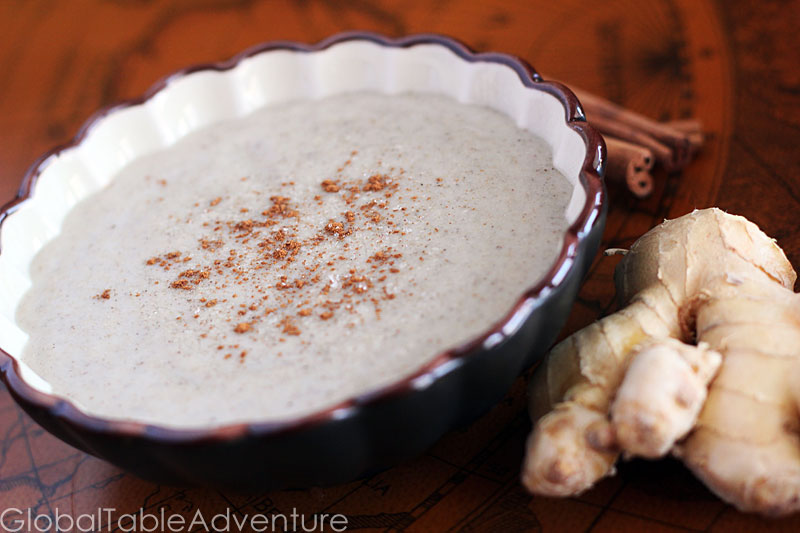
Serves 2-4 What is breakfast like at your house? Does one person eat more sugar than oatmeal? More syrup than pancake? That’s Mr. Picky. One day I fully expect him to eat a bowl of nothing but sugar. Meanwhile I just barely dust my breakfast with sweeteners. While eating, we take turns shaking our heads at each other’s crazy eating habits. Today, take your sugar out for a spin on a bowl of millet porridge, an African treat. Particularly popular in central Africa, you can make this dish as sweet as you like (although the characteristic whole grain/bitter flavor will remain strong in millet) – or you can leave it unsweetened for a more savory dish. Ingredients: 1 cup millet flour (available at African markets or some health food stores) 1/2 tsp grated ginger 1/8 cup sugar, plus extra as needed 1 cup water 1 1/2 -2 cups whole milk cinnamon for garnish, to taste Method: Good morning sleepyhead! Rub the fog from your eyes. Grating a little fresh ginger will help awaken the senses. This …
Read More
Serves 3 In El Salvador, Atol is made with fresh corn kernels, milk, cinnamon, and sugar. My version is simplified for the home cook – but if you have the time, and if it is in season, cut the corn straight off the cob. Do it while listening to Salvadoran music, just because. Ingredients: 1 lb frozen corn, thawed 2 cups milk 1 cinnamon stick 1/4-1/2 cup sugar extra milk, as needed ground cinnamon for garnish Method: Add golden nuggets of goodness to a medium pot. Balance a cinnamon stick on top. Pour milk over the cinnamon stick… and click on the heat. While the milk is coming to a simmer, pour on the sugar. (If you don’t have a crazy wild sweet tooth, just add 1/4 cup. Also, if your corn is ultra sweet you may not need so much). Give everything a buzz with an immersion blender. Simmer about 15-20 minutes, then strain out all the fibers and yucky bits. Put those in your garden. Reheat the strained mixture if it cools down …
Read More



